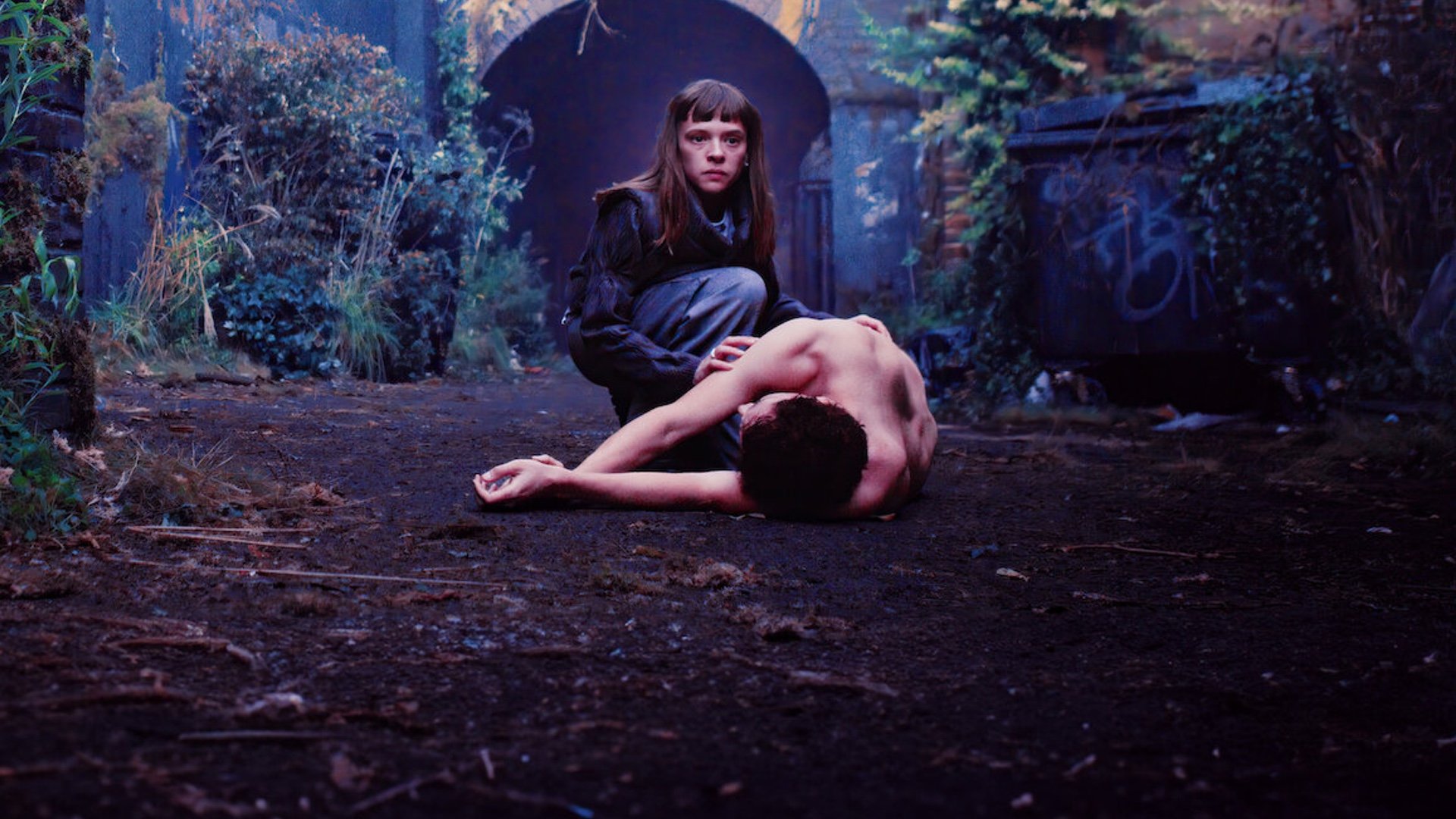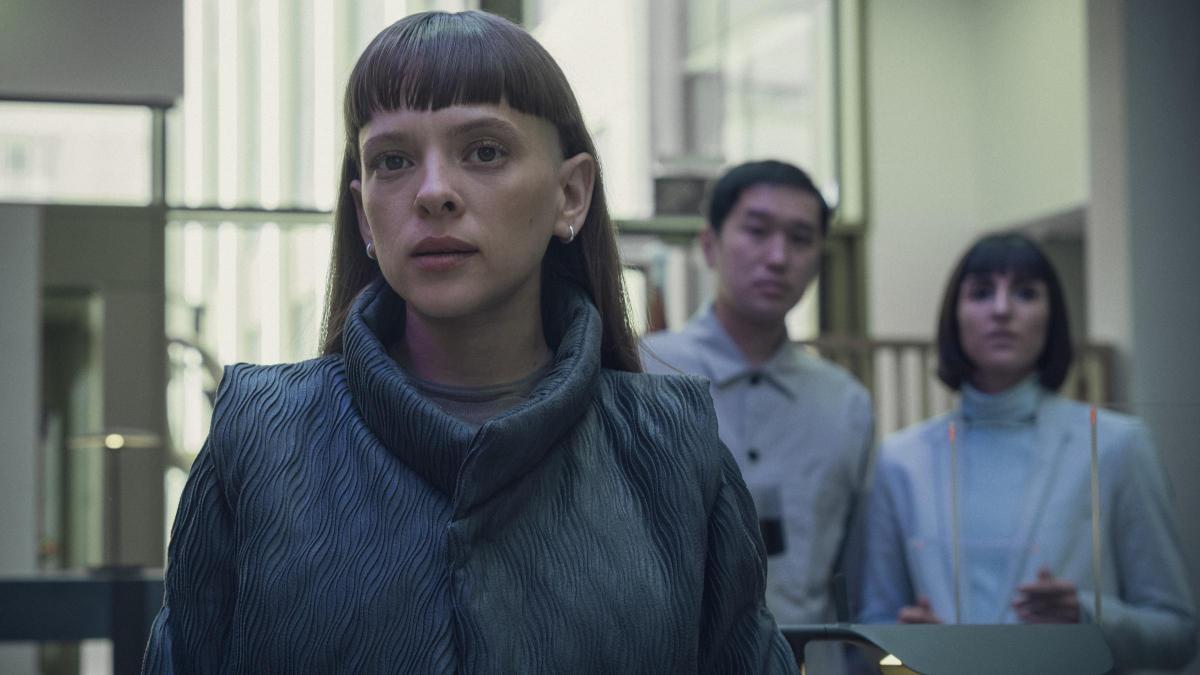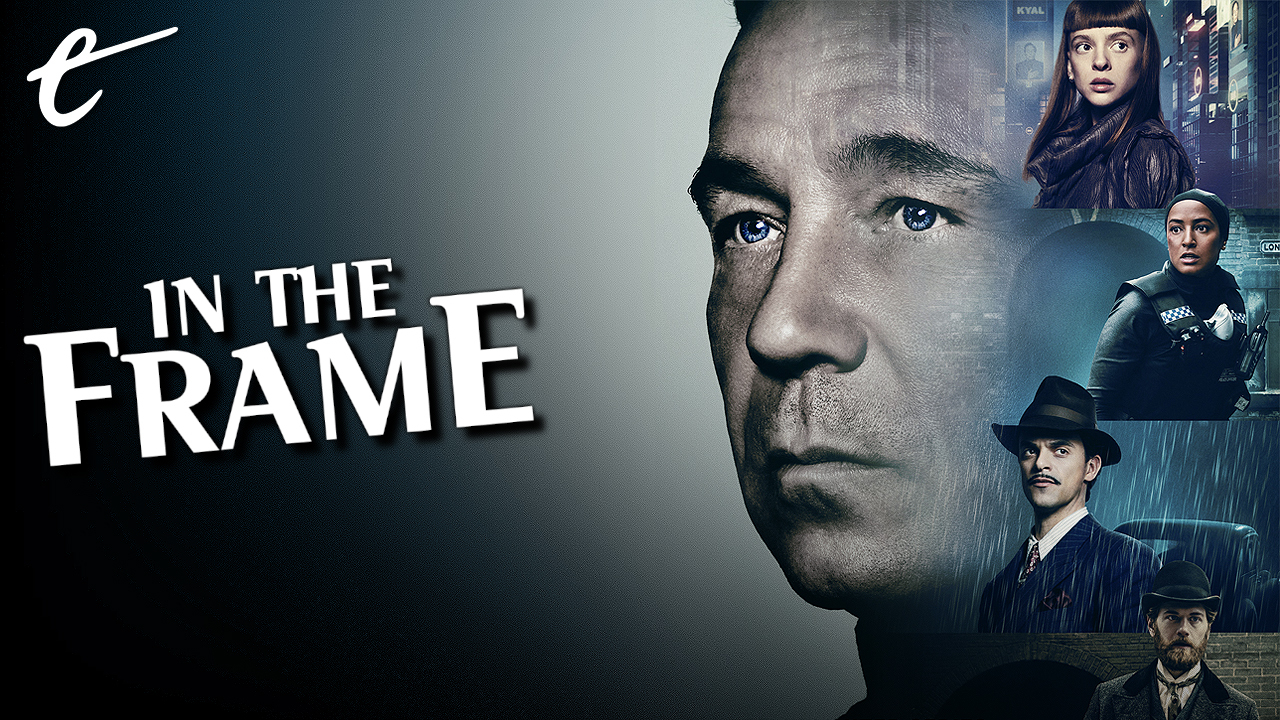This discussion of Bodies, the new miniseries now streaming on Netflix, contains spoilers, and also psychogeography.
Bodies arrived on Netflix last week. The eight-part limited series follows a murder investigation in London across four different time periods. The body of Gabriel Defoe (Tom Mothersdale) is recovered in the fictional Longharvest Lane in 1890, 1941, 2023, and 2053. However, as the mystery develops, Bodies becomes a show less about Defoe than it does about London itself.
Bodies is adapted from an eight-issue comic book series published by the DC imprint Vertigo. It was written by Si Spencer, and illustrated by Dean Ormston, Tula Lotay, Meghan Hetrick, and Phil Winslade. The central gimmick of the comic was that each of the artists handled one of the four time periods, ensuring that each era had a very distinct sensibility. While the series takes certain liberties in adapting the source material to screen, it remains true to the spirit of the original work.
To put it simply, Bodies feels heavily influenced by the work of Alan Moore. Moore is arguably the greatest comic book writer of his generation, and almost certainly the most influential British comic book writer in history. As writer, Moore was responsible for genre- and even medium-defining works like Swamp Thing, Miracleman, From Hell, V for Vendetta, and Watchmen. He also inspired a generation of British writers who followed in his wake — the “British Invasion” of American comics.
Moore was undeniably a massive influence on Spencer. On Spencer’s passing, his friend Will Vigar noted that Moore was a frequent topic of discussion for the pair. “When the British invasion of comic writers happened, we would have spirited conversations (i.e. massive arguments) about the Alan Moore effect on comics, and it became apparent that this is where he wanted his writing to take him,” Vigar recalled. Of course, there are very few British writers who would deny Moore’s influence.
Moore’s work is so inescapable that even audiences who have never picked up a comic book can see its influence on Bodies. This is most obvious at the two extremes of the timeline. The 1890 investigation, overseen by Alfred Hillinghead (Kyle Soller), recalls From Hell, Moore’s account of the famous Jack the Ripper case illustrated by Eddie Campbell. It was adapted into a feature film by Albert and Allen Hughes. Like most adaptations of his work, Moore did not care for it.
The 2023 setting evokes the dystopia of V for Vendetta, illustrated by David Lloyd. It was adapted into film by James McTeigue, which Moore also didn’t want to be involved with. Of course, much like From Hell drew from the real Jack the Ripper case, V for Vendetta owed a lot to George Orwell’s 1984. Still, this ominous future overseen by Commander Elias Mannix (Stephen Graham) and rooted in a staged terrorist attack recalls a lot of the peculiarly British fascism of V for Vendetta.

To a certain extent, Mannix also recalls the character of Ozymandias for Watchmen, illustrated by Dave Gibbons. In Watchmen, Ozymandias is a well-meaning liberal who concocts an elaborate plan to fake a horrific terrorist attack that kills millions of New Yorkers, in what he believes to be a necessary sacrifice to establish his utopia. Bodies presents Mannix as a particularly unsettling dictator, with his followers constantly reassuring each other, “Know that you are loved.”
However, Bodies shares more than just an aesthetic with Moore’s influential body of work. The comic and the television show are in conversation with some of the writer’s core themes and ideas. In particular, the show uses London in some very interesting ways. While the series has at least four protagonists, each leading the investigation in one of the four time periods, it is also very invested in the idea of London itself. This is a story about how a city changes — and, crucially, how it doesn’t.
Critics have pointed out that the show frequently employs split screen to evoke “the panels of a comic book,” but these shots also serve to situate the characters in relationship to one another. Throughout Bodies, characters occupy the same spaces, separated by oceans of time. Still, there is a connection. Longharvest Lane is always there. Hillinghead can mark a brick in 1890, and Iris Maplewood (Shira Haas) can read that engraving over a century and a half later.
Longharvest Lane is not unique. Hillinghead works in New Scotland Yard, the police headquarters established in 1890. Karl Weissman (Jacob Fortune-Lloyd) and Shahara Hasan (Amaka Okafor) work in the same complex in 1941 and 2023. The series conveniently straddles the period between 1967 and 2016 when the Metropolitan Police Service moved out of that area, although they eventually returned to part of that original complex. The more things change, the more they remain the same.
There are obvious differences between each time period, but Bodies suggests that these are largely superficial. Hillinghead searches handwritten records in gigantic tomes, while Hasan runs equivalent inquiries more efficiently on computers. Hillinghead, Weissman, and Hasan each face prejudice in their respective times, even if the nature of that prejudice shifts: Hillinghead is a closeted gay man, Weissman is a Jewish man who has taken the gentrified name “Whiteman,” Hasan is a Muslim woman.
Separated by more than a century, procedures and assumptions remain consistent. When Hillinghead and Hasan recover their bodies, the autopsies are cut against one another. Both detectives note the strange marking on the body’s right arm. It is assumed to be an identifier. In 1890, it could be “Fenian or Hebrew claptrap.” In 2023, it’s possibly “far-right.” Some scars run deep. Even in 2053, Mannix still ruminates on what “the Fenians” learned from Alfred Nobel’s invention of dynamite.

In the world of Bodies, London is a certainty. It is a fixture. Weissman’s storyline unfolds against the backdrop of the Blitz, a sustained bombing campaign that destroyed more than 70,000 buildings and damaged 1.7 million more. Even then, the city endures. Weissman can hide a record in an old police bar for Hasan to recover more than six decades later, unblemished. The followers of Sir Julian Harker (also Graham) can hide a bomb in “the oldest part of” his bank, and it can remain untouched.
This is the character of London. It is not one of the oldest cities in the world, but it prides itself on being one of the most consistent. The London Metro was the world’s first underground railway. The Royal Society is the world’s oldest national scientific academy. London Zoo is the world’s oldest scientific zoo. Even Hamleys is the world’s oldest toy store. All of these institutions remain operating today. Bodies argues that there is a certain permanence to London, reflecting the city’s soul.
The French Situationists proposed the concept of “psychogeography,” with Guy Debord defining it as “the precise laws and specific effects of the geographical environment, consciously organized or not, on the emotions and behavior of individuals.” It was brought into British cultural consciousness by writer Iain Sinclair in his 1972 work Lud Heat, charting the city’s occult psychogeography. Sinclair has since lamented that he has “some weird brand image as the London psychogeographer.”
Psychogeography is the idea that a location can have a feeling or a vibe. “Psychogeography is the fact that you have an opinion about a space the moment you step into it,” explains psychogeographer Wilfried Hou Je Bek. It is also an essential part of Moore’s work, most obviously in Watchmen and From Hell. Moore had been inspired by Sinclair’s “concept of London as a web of signs and signals.” The fourth chapter of From Hell follows Sir William Gull on a journey through that psychic web.
Bodies builds on this, with an added complication. Bodies does not just travel through space. It cuts across time. Comics lend themselves to this approach. Panels are still snapshots, and it is a common trick for artists to use the format to capture a sequence of events that share the same physical space as contained within the page but occupying different positions in time within particular panels. Alison Bechdel has described her graphic memoirs as “the psychochronology of everyday life.”

There is something magical in this. Sinclair and Moore suggested that architect Nicholas Hawksmoor built his churches in a pentagram pattern overlaying the city. Moore is a practicing wizard. Bodies offers a pseudo-scientific explanation for its central mystery, a stable time loop in which Mannix travels back in time to become Harker and thus become his own great-grandfather, but couches this in occult imagery, like the seances conducted by Harker’s mother (Anna Calder-Marshall).
“The TARDIS is essentially a funny shaped car with extraordinary specs but does time travel even need a vehicle?” Spencer asked in an interview during the comic’s publication. “In a quantum world filled with chaos theory and chaos magick where a single electron may exist simultaneously at every time and point in space why would you need a glorified truck? Is a ghost a present day person seeing a vision of the past? Or a time traveler jaunting forward in time to observe us? And what about past life regression, shamanic journeying, astral planes? Is that time travel?” It’s all very mystical.
Tellingly, Mannix’s grand plan to truly reshape Britain cannot be completed if London is left standing. To create his utopia, Mannix must accomplish what the Germans could not. He must completely destroy London, shattering the city’s soul and breaking that sense of continuity. He designs a bomb that will kill 200,000 people in the initial “firestorm” and “half a million people” in total. It also completely demolishes the city. The futuristic skyline visible from Maplewood’s apartment is alien.
If psychogeography suggests that a city can have a soul, then Bodies contends that soul is tied to a continuity of history. It isn’t just that these places exist, it is that they endure. Mannix’s attack is a disruption of that continuity. Interestingly, Spencer named Shahara Hasan after his close friend Shahara Islam. Islam died in the London terrorist bombings on July 7th, 2005, traveling on a bus that Spencer regularly took into town.
Although it was largely shot in Yorkshire, Bodies is a show about how London stands as a monument to its own history. It ends with Hasan thwarting Mannix’s scheme. She gets to relive the opening of the show, suggesting that continuity has been restored. Fittingly, the show’s closing shot is a pan up to the iconic London skyline. Of course, there’s a last-minute twist – the initials KYAL (“Know You Are Loved”) light up the side of the Bishopsgate skyscraper – but there is a sense that London abides.






Published: Oct 23, 2023 11:00 am